Abstract
Mild muscular exercise did not cause any significant rise in the ammonium concentration of venous blood draining the exercising forearm of control subjects or patients with cirrhosis. However, in both cirrhotic and non-cirrhotic subjects moderate exercise produced significant increases in venous blood ammonium values and these occurred earlier and were more prolonged in cirrhotic patients. Severe exercise caused larger increases in venous blood ammonium concentration in all subjects but there were no significant differences between the mean ammonium concentrations of the cirrhotic and control groups either before or after exercise. All ammonium values returned to their pre-exercise levels within half an hour of resting.
The exact mechanism of these phenomena is not fully understood but they are of practical importance in the study of blood ammonium metabolism in normal subjects and in patients with cirrhosis of the liver. The importance of making subjects rest for at least 30 minutes before obtaining blood for ammonium determination is emphasized in order to obviate misleadingly high readings due to muscular activity.
Full text
PDF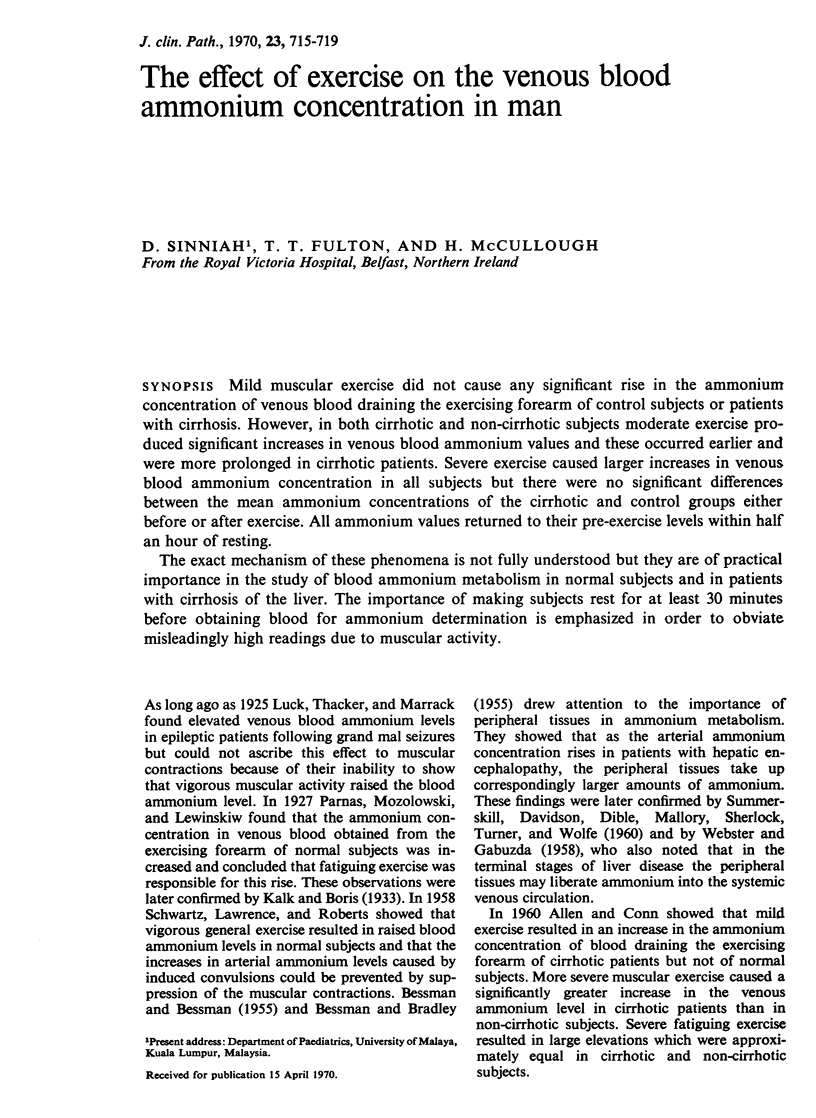
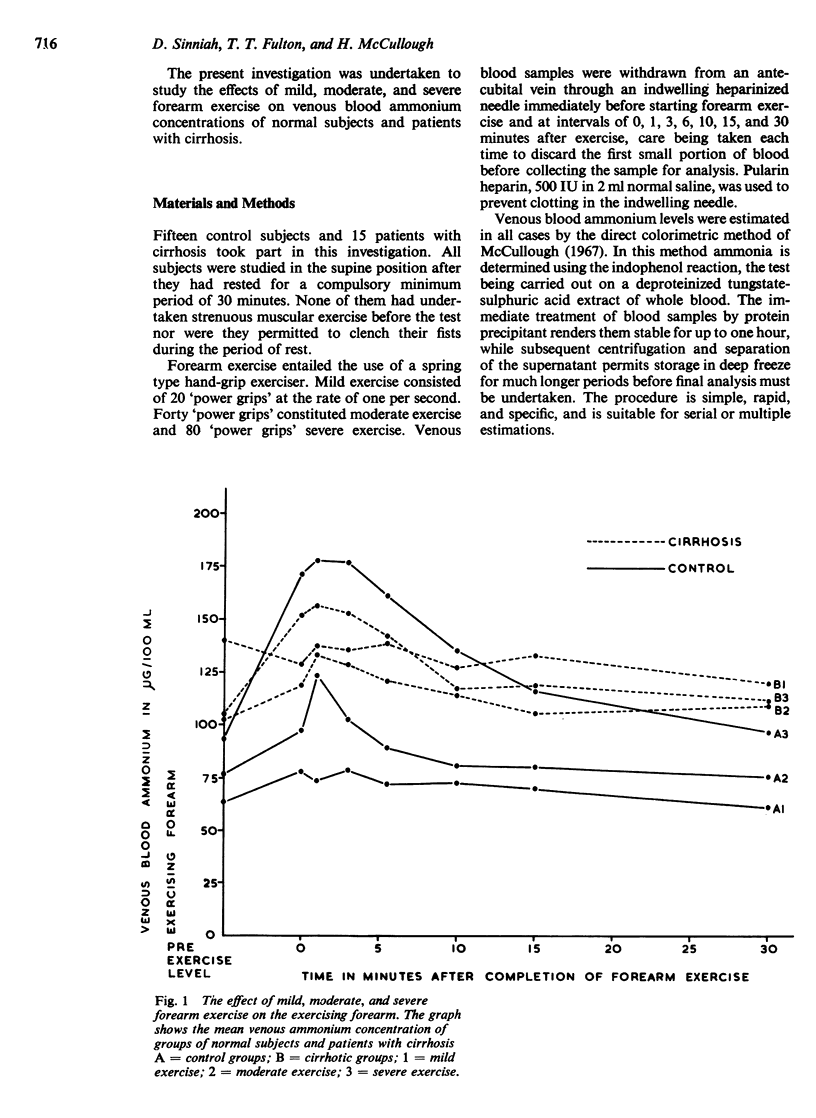
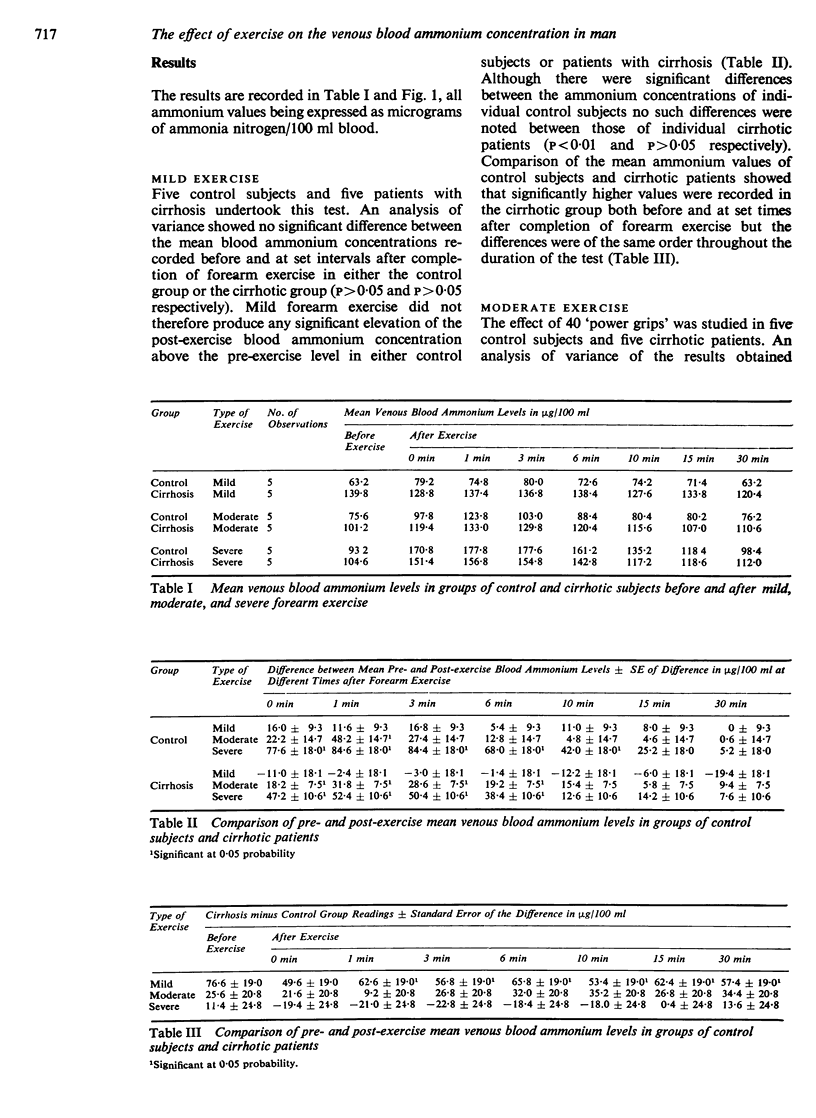
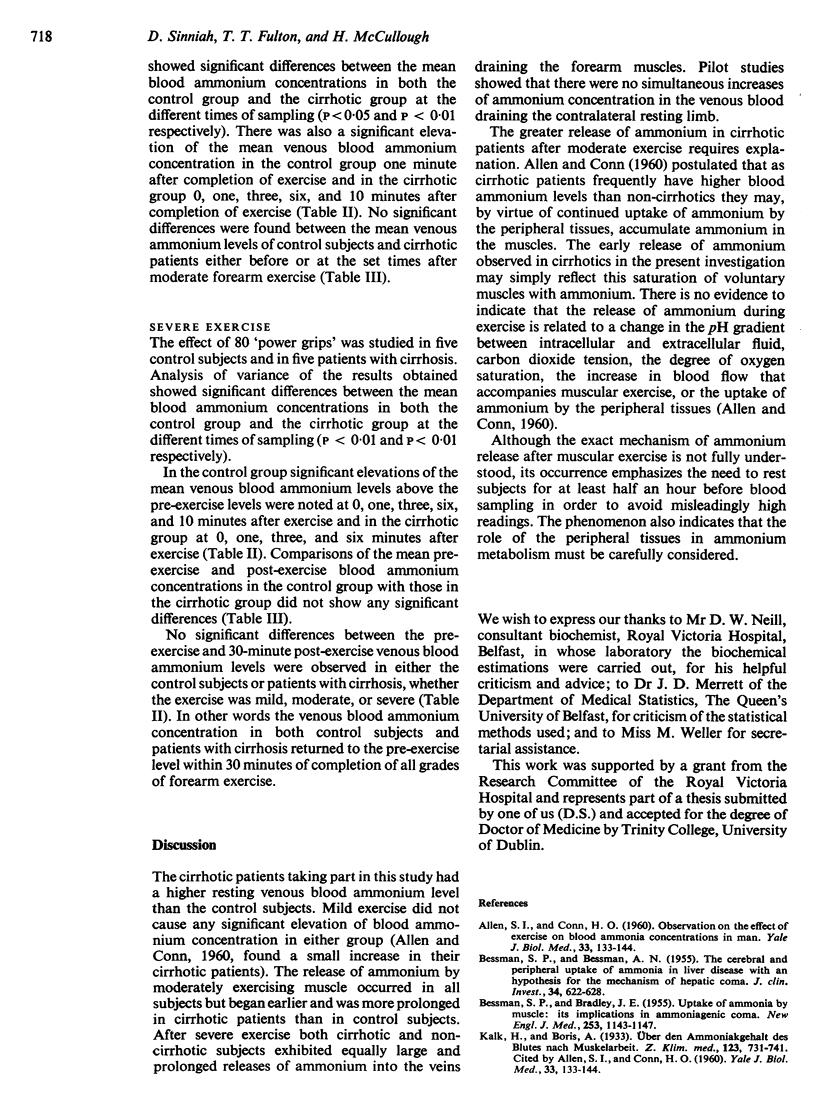
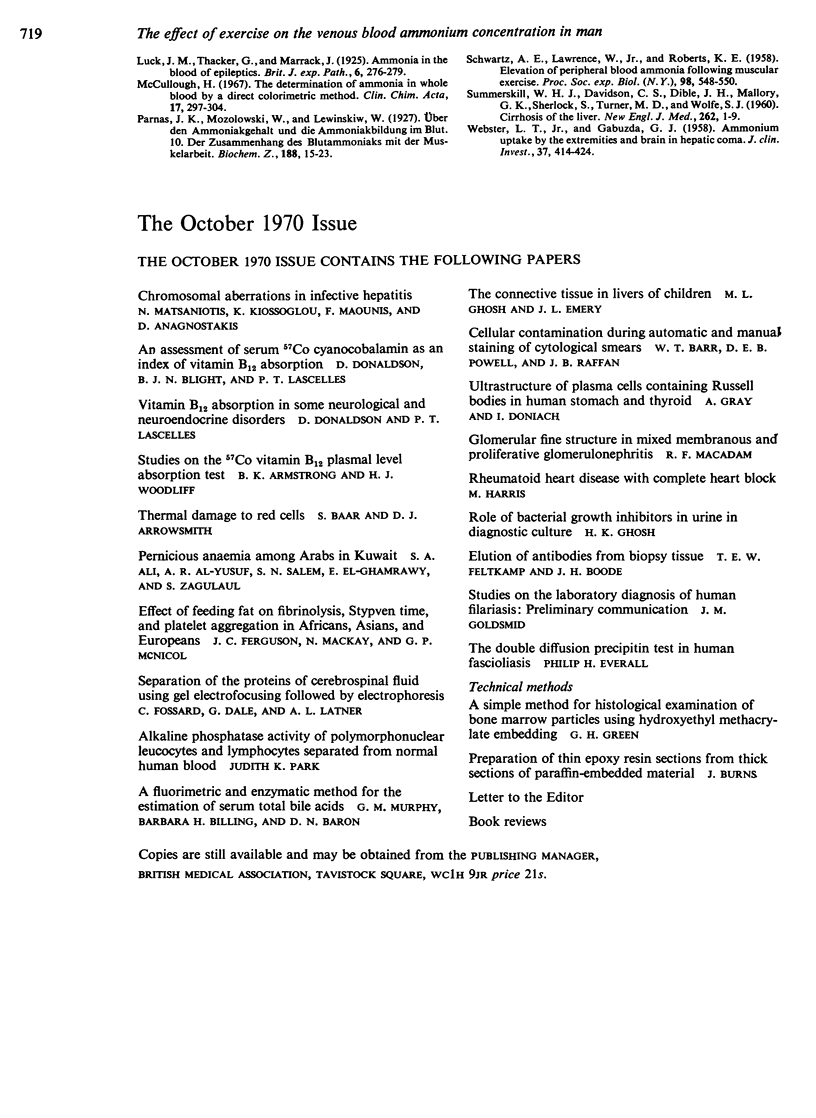
Selected References
These references are in PubMed. This may not be the complete list of references from this article.
- ALLEN S. I., CONN H. O. Observations on the effect of exercise on blood ammonia concentration in man. Yale J Biol Med. 1960 Oct;33:133–144. [PMC free article] [PubMed] [Google Scholar]
- ALLEN S. I., CONN H. O. Observations on the effect of exercise on blood ammonia concentration in man. Yale J Biol Med. 1960 Oct;33:133–144. [PMC free article] [PubMed] [Google Scholar]
- BESSMAN S. P., BESSMAN A. N. The cerebral and peripheral uptake of ammonia in liver disease with an hypothesis for the mechanism of hepatic coma. J Clin Invest. 1955 Apr;34(4):622–628. doi: 10.1172/JCI103111. [DOI] [PMC free article] [PubMed] [Google Scholar]
- BESSMAN S. P., BRADLEY J. E. Uptake of ammonia by muscle; its implications in ammoniagenic coma. N Engl J Med. 1955 Dec 29;253(26):1143–1147. doi: 10.1056/NEJM195512292532602. [DOI] [PubMed] [Google Scholar]
- McCullough H. The determination of ammonia in whole blood by a direct colorimetric method. Clin Chim Acta. 1967 Aug;17(2):297–304. doi: 10.1016/0009-8981(67)90133-7. [DOI] [PubMed] [Google Scholar]
- SCHWARTZ A. E., LAWRENCE W., Jr, ROBERTS K. E. Elevation of peripheral blood ammonia following muscular exercise. Proc Soc Exp Biol Med. 1958 Jul;98(3):548–550. doi: 10.3181/00379727-98-24103. [DOI] [PubMed] [Google Scholar]
- SUMMERSKILL W. H., DAVIDSON C. S., DIBLE J. H., MALLORY G. K., SHERLOCK S., TURNER M. D., WOLFE S. J. Cirrhosis of the liver: a study of alcoholic and nonalcoholic patients in Boston and London. N Engl J Med. 1960 Jan 7;262:1–9. doi: 10.1056/NEJM196001072620101. [DOI] [PubMed] [Google Scholar]
- WEBSTER L. T., Jr, GABUZDA G. J. Ammonium uptake by the extremities and brain in hepatic coma. J Clin Invest. 1958 Mar;37(3):414–424. doi: 10.1172/JCI103621. [DOI] [PMC free article] [PubMed] [Google Scholar]


